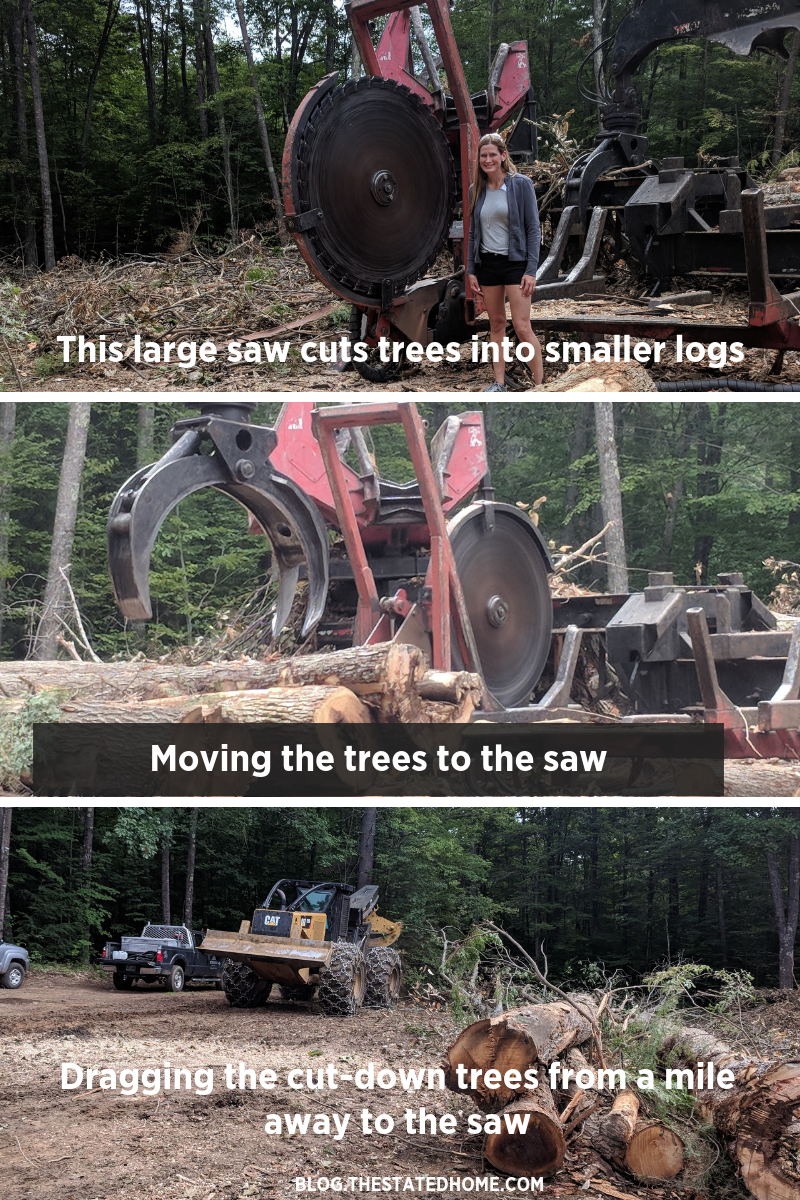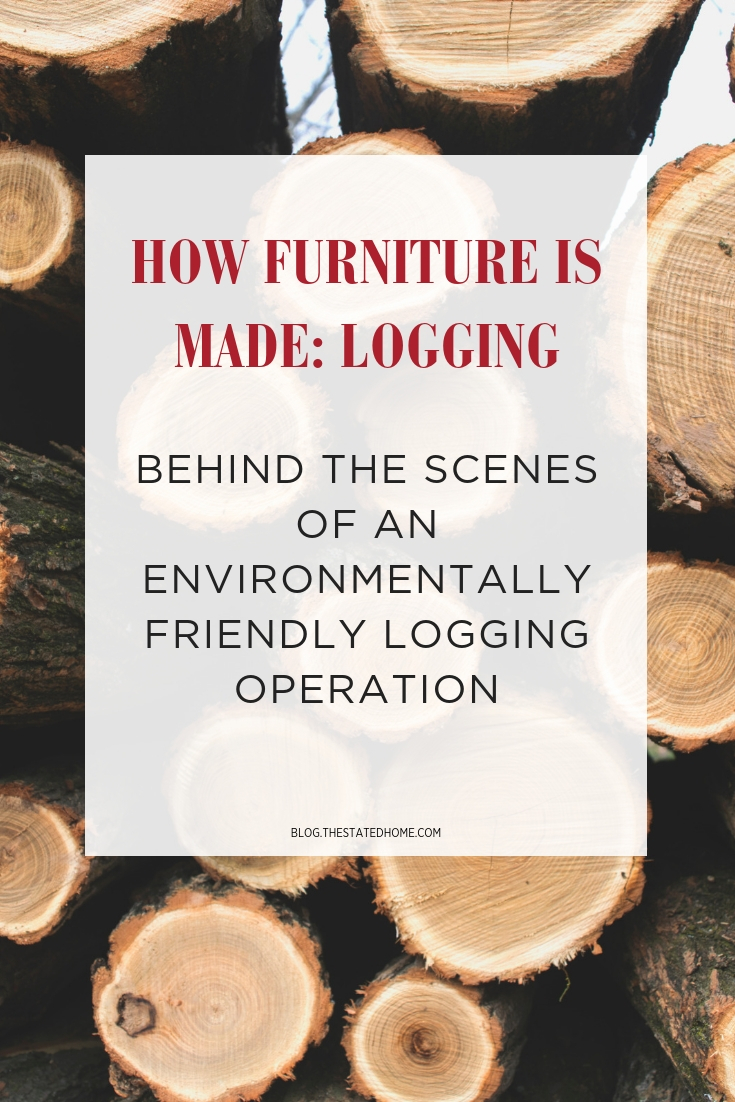One of the benefits of buying American-made furniture is that the pieces are most likely built out of domestically grown trees. And those trees are likely harvested from sustainably managed forests. That means you can rest easy knowing your purchase isn’t supporting harmful logging practices like clear cutting (and in fact may actually be helping to maintain a healthy ecosystem).
We had a general idea about why this mattered, but we never knew exactly what went on in a sustainably managed logging operation. So we jumped at the chance to visit a logging site in New Hampshire and learn everything we could about the actual business of cutting down trees. Here’s what we discovered:
- Most lumber is cut from privately owned land. The landowner hires a logger to come cut down a portion of the trees and splits the profit when those trees are sold.
- Cutting down trees is kind of like weeding your garden–just on a larger scale. The logger takes out the diseased and overly large trees, which makes room for the younger, healthier ones to grow.
- Most of the trees are not clear cut (which is when a logger removes all the trees from a certain area). Instead, one will be removed and the neighboring trees are left standing.
- Some areas require clear-cutting (if, for instance, all of the trees are diseased). This cleared area gives wildlife a spot to forage for food.
- Logging does not require a lot of people. There might just be three men (and it’s often men) handling the job: someone to cut the trees down, someone to haul the trees out of the forest, and someone to cut the trees into logs that can fit on a truck.
- There is very little waste. Any part of the tree that is removed but can’t be used as a log gets processed into wood chips and sold (at the logging site we went to, the wood chips were burned for power).
- All of the work above is done with really large tools. There’s no guys with a hand-held saw here. In fact, it takes just about a second for a tree to be cut down.
- After the logs leave the site, they are taken to a mill where they are cut into boards and dried.
- Sadly, the number of mills in America has gotten so low, they can’t possibly process the amount of lumber that gets cut down. So a lot of these logs are shipped to Canada or overseas for processing and made into imported furniture and flooring.
- There’s no need to feel guilty about deforestation in American forests: Hardwood tree numbers have increased more than 90 percent in the last 50 years and two new trees are grown for every one that is removed.



Leave a Reply